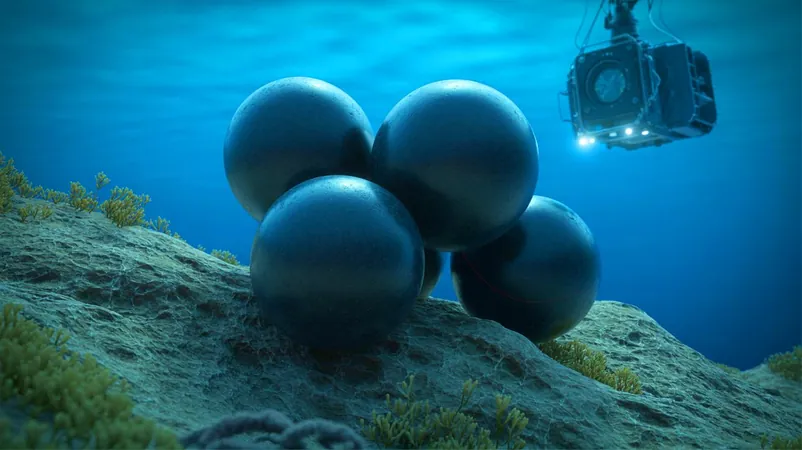
Scientists Stunned as Alien-Like Flatworm Eggs Discovered at Mind-Blowing Depths of 20,300 Feet!
2025-09-16
Author: Ying
In a jaw-dropping revelation, scientists have stumbled upon bizarre black egg capsules nestled 20,300 feet beneath the ocean's surface in the enigmatic Kuril-Kamchatka Trench. This unprecedented find challenges everything we knew about life in the most extreme reaches of our planet's depths.
The Unprecedented Discovery of Deep-Sea Flatworm Reproduction
Researchers from the University of Tokyo and Hokkaido University made waves with their discovery, using a remotely operated vehicle (ROV) to unveil four glossy black spheres clinging to rocky substrates deep below the surface. Initially mistaken for fish eggs, these mysterious cocoons were soon identified as the reproductive capsules of free-living flatworms, an organism typically associated with much shallower tide pools.
Inside these capsules lay three to seven embryos at various developmental stages. Some remained round, while others appeared elongated, akin to worm forms. Observations by invertebrate biologist Kakui noted the fragile white bodies and a milky liquid within the capsules. This groundbreaking discovery not only sets a new record for flatworm reproduction but nearly doubles the previous record depth of 10,600 feet.
Unlocking the Secrets of Extreme Depths
The significance of this find reaches far beyond mere curiosity. It provides a fresh perspective on how life can adapt to the harsh conditions of the ocean's deepest trenches, a realm previously thought too extreme for such organisms.
Genetic Revelations: A Link to Shallow Waters
The embryos' genetic analysis revealed a connection to the Tricladida order, specifically the Maricola suborder, suggesting these marine flatworms have ancestral roots in coastal environments rather than evolving in deep-sea habitats. This discovery aligns with theories that many species found in the abyss derive from shallow-water ancestors, underscoring the idea that extreme adaptation doesn't always require drastic structural changes.
The Kuril-Kamchatka Trench: A Hidden Gem of Biodiversity
The Kuril-Kamchatka Trench remains one of the world's least explored marine regions, plunging to depths of over 31,000 feet. This particular area, situated between 11,300 to 20,000 feet, likely harbors a wealth of unknowable biodiversity. Because the fragile deep-sea organisms are often damaged during observation trials, the intact egg capsules provide an invaluable glimpse into early developmental stages, shifting the narrative around deep-sea exploration.
The Role of Flatworms in Scientific Research
Flatworms may be simple in structure, but their regenerative capabilities make them intriguing subjects for scientific inquiry. With the capacity to regrow entire body parts, they serve as vital models for understanding biological resilience and stress adaptation. The synergy of field collection, molecular analysis, and emerging ROV technologies paves the way for unprecedented exploration of these mysterious ecosystems.
As researchers delve into the depths of the ocean, the potential for fascinating discoveries remains boundless. What insights might these discoveries bring into the resilience of life in extreme conditions and the secrets hidden beneath the waves? The future of deep-sea research promises to be as thrilling as it is enlightening.




 Brasil (PT)
Brasil (PT)
 Canada (EN)
Canada (EN)
 Chile (ES)
Chile (ES)
 Česko (CS)
Česko (CS)
 대한민국 (KO)
대한민국 (KO)
 España (ES)
España (ES)
 France (FR)
France (FR)
 Hong Kong (EN)
Hong Kong (EN)
 Italia (IT)
Italia (IT)
 日本 (JA)
日本 (JA)
 Magyarország (HU)
Magyarország (HU)
 Norge (NO)
Norge (NO)
 Polska (PL)
Polska (PL)
 Schweiz (DE)
Schweiz (DE)
 Singapore (EN)
Singapore (EN)
 Sverige (SV)
Sverige (SV)
 Suomi (FI)
Suomi (FI)
 Türkiye (TR)
Türkiye (TR)
 الإمارات العربية المتحدة (AR)
الإمارات العربية المتحدة (AR)